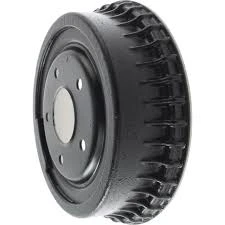
-
 Afrikaans
Afrikaans -
 Albanian
Albanian -
 Amharic
Amharic -
 Arabic
Arabic -
 Armenian
Armenian -
 Azerbaijani
Azerbaijani -
 Basque
Basque -
 Belarusian
Belarusian -
 Bengali
Bengali -
 Bosnian
Bosnian -
 Bulgarian
Bulgarian -
 Catalan
Catalan -
 Cebuano
Cebuano -
 Corsican
Corsican -
 Croatian
Croatian -
 Czech
Czech -
 Danish
Danish -
 Dutch
Dutch -
 English
English -
 Esperanto
Esperanto -
 Estonian
Estonian -
 Finnish
Finnish -
 French
French -
 Frisian
Frisian -
 Galician
Galician -
 Georgian
Georgian -
 German
German -
 Greek
Greek -
 Gujarati
Gujarati -
 Haitian Creole
Haitian Creole -
 hausa
hausa -
 hawaiian
hawaiian -
 Hebrew
Hebrew -
 Hindi
Hindi -
 Miao
Miao -
 Hungarian
Hungarian -
 Icelandic
Icelandic -
 igbo
igbo -
 Indonesian
Indonesian -
 irish
irish -
 Italian
Italian -
 Japanese
Japanese -
 Javanese
Javanese -
 Kannada
Kannada -
 kazakh
kazakh -
 Khmer
Khmer -
 Rwandese
Rwandese -
 Korean
Korean -
 Kurdish
Kurdish -
 Kyrgyz
Kyrgyz -
 Lao
Lao -
 Latin
Latin -
 Latvian
Latvian -
 Lithuanian
Lithuanian -
 Luxembourgish
Luxembourgish -
 Macedonian
Macedonian -
 Malgashi
Malgashi -
 Malay
Malay -
 Malayalam
Malayalam -
 Maltese
Maltese -
 Maori
Maori -
 Marathi
Marathi -
 Mongolian
Mongolian -
 Myanmar
Myanmar -
 Nepali
Nepali -
 Norwegian
Norwegian -
 Norwegian
Norwegian -
 Occitan
Occitan -
 Pashto
Pashto -
 Persian
Persian -
 Polish
Polish -
 Portuguese
Portuguese -
 Punjabi
Punjabi -
 Romanian
Romanian -
 Russian
Russian -
 Samoan
Samoan -
 Scottish Gaelic
Scottish Gaelic -
 Serbian
Serbian -
 Sesotho
Sesotho -
 Shona
Shona -
 Sindhi
Sindhi -
 Sinhala
Sinhala -
 Slovak
Slovak -
 Slovenian
Slovenian -
 Somali
Somali -
 Spanish
Spanish -
 Sundanese
Sundanese -
 Swahili
Swahili -
 Swedish
Swedish -
 Tagalog
Tagalog -
 Tajik
Tajik -
 Tamil
Tamil -
 Tatar
Tatar -
 Telugu
Telugu -
 Thai
Thai -
 Turkish
Turkish -
 Turkmen
Turkmen -
 Ukrainian
Ukrainian -
 Urdu
Urdu -
 Uighur
Uighur -
 Uzbek
Uzbek -
 Vietnamese
Vietnamese -
 Welsh
Welsh -
 Bantu
Bantu -
 Yiddish
Yiddish -
 Yoruba
Yoruba -
 Zulu
Zulu
Is it possible to upgrade from drum brakes to disc brakes on my vehicle?
Converting Drum Brakes to Disc Brakes A Comprehensive Guide
When it comes to automotive braking systems, the debate between drum brakes and disc brakes is longstanding. While drum brakes were once the industry standard, many car enthusiasts and manufacturers have started to favor disc brakes for their superior performance. If you’re considering upgrading your vehicle's braking system, you might be wondering, Can you convert drum brakes to disc brakes? The answer is yes, and this article will explain why and how to undertake this conversion.
Advantages of Disc Brakes
Before diving into the conversion process, it’s essential to understand why disc brakes are often preferred. Disc brakes generally offer better stopping power, especially in high-performance or heavy-duty applications. They dissipate heat more effectively, which reduces the likelihood of brake fade under heavy use. Additionally, disc brakes usually require less pedal effort to achieve the same stopping force, making for a more responsive driving experience. Moreover, they are less prone to water buildup, which helps maintain consistent braking performance in wet conditions.
Assessing Your Vehicle
The first step in converting drum brakes to disc brakes is assessing your vehicle. Not all cars are suitable for this conversion, as it may depend on the specific make and model. You'll want to consider these factors
1. Vehicle Type Older vehicles or those with a solid rear axle may require more extensive modifications than newer models. 2. Intended Use If you're upgrading for racing or towing, higher-performance disc brakes may be necessary. 3. Budget Disc brake conversions can be costly due to the need for new components.
Components Needed for Conversion
can you convert drum brakes to disc

Once you've determined that your vehicle is a good candidate for conversion, you’ll need to gather the necessary components. Here are some essential parts you’ll need
1. Disc Brake Rotors Choose rotors that fit your vehicle's specifications. 2. Calipers Select calipers that correspond with your chosen rotors. 3. Brake Pads Ensure they match the calipers you purchase. 4. Hoses and Lines New brake lines may be required, as drum brake lines may not fit properly with the new system. 5. Mounting Brackets and Hardware You’ll need adapters to mount calipers to the spindle. 6. Spindles Sometimes, spindles from a disc brake-equipped vehicle are necessary.
The Conversion Process
1. Preparation Start by safely elevating the vehicle and removing the wheels. Take off the existing drum brake assemblies. 2. Installing New Components Begin by installing the new spindles that accommodate the disc brakes. Attach the new mounting brackets, followed by the calipers and rotors. Each component should be tightened to manufacturer specifications to ensure safety. 3. updating Brake Lines Replace or modify the brake lines to ensure they fit properly with the new calipers. This may involve bending custom lines or using pre-made hoses designed for disc brake systems. 4. Brake Fluid After everything is installed, bleed the brake system to remove any air pockets and ensure proper brake fluid flow.
5. Testing Before hitting the road, conduct a thorough test of the braking system. Start at low speeds to familiarize yourself with the new braking response before attempting more aggressive stops.
Conclusion
Converting from drum brakes to disc brakes can significantly enhance your vehicle's braking performance, offering a safer and more enjoyable driving experience. While the process can be complex and may vary from one vehicle to another, with the right components and attention to detail, you can successfully undertake this modification. Always consider consulting with a professional if you're unsure about any steps in the conversion to ensure your safety and the effectiveness of your new braking system.
-
Rear Drum Brakes Maintenance TipsNewsAug.04,2025
-
Key Components Affecting Brake Drum FunctionNewsAug.04,2025
-
Important Inspection for Truck Drum BrakeNewsAug.04,2025
-
How to Prepare for Changing Rear Drum BrakesNewsAug.04,2025
-
Essential Tools for Cleaning Drum Brakes ProperlyNewsAug.04,2025
-
Brake Drum Function GuideNewsAug.04,2025
-
Safety Features of Red Brake DrumsNewsAug.01,2025
